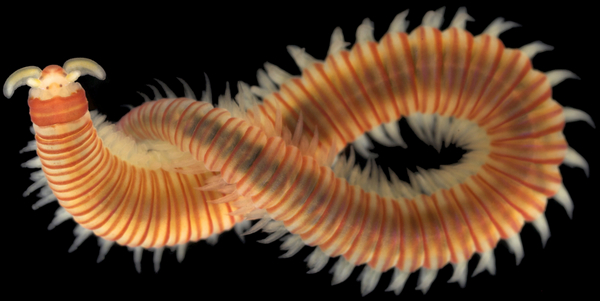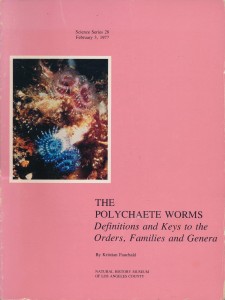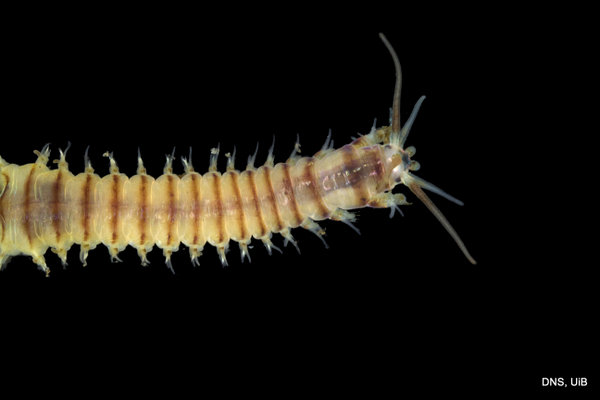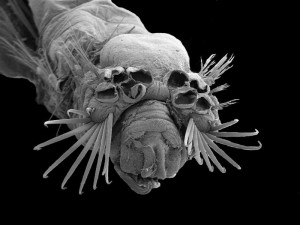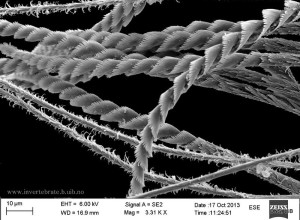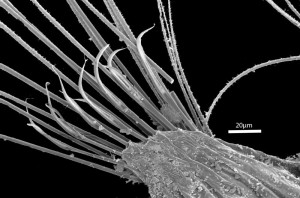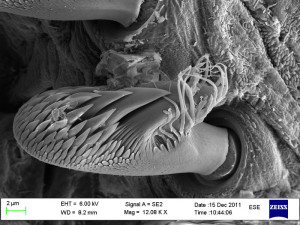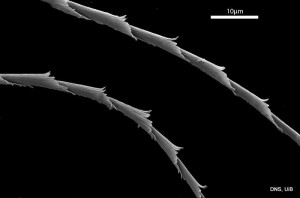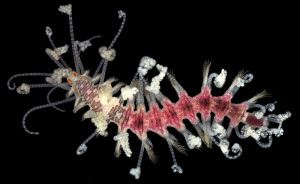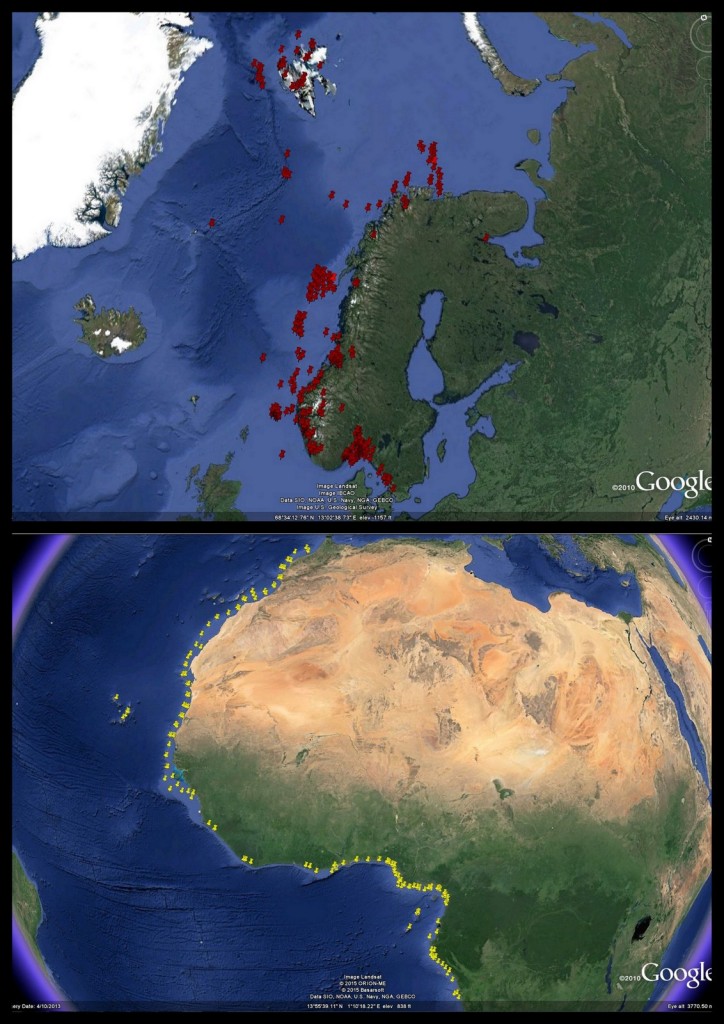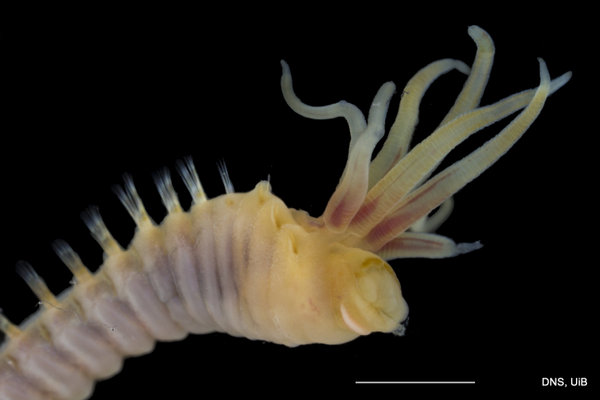Welcome to our contribution to the very first International Polychaete Day!
Today, we want to share information and photographs of these amazing creatures that usually reside in the deep blue, and who therefore haven’t gotten the public attention that they deserve (until now!). The event will take place world wide, starting at the Australian Museum in Sydney and move through the time zones where it will be celebrated in Russia, Norway, the UK, and in the USA – amongst others!
Kristian Fauchald
The celebration has been initiated as a way to commemorate Kristian Fauchald, a key figure in the polychaetologist community for many years.

Kristian Fauchald (1935-2015). Top and bottom right photos from the International Polychaete School held at the White Sea Biological Station of The Moscow State University in 2011, © A. Semenov. Bottom left: from Kristian’s public lecture in Moscow in 2011 © Dynasty Foundation
Amongst many other achievements, he was the author of the famous “pink book”, which has served as an introduction to the world of polychaete taxonomy for many of us.
Kristian was born in Norway in 1935, and studied biology at the University of Bergen until beginning his doctorate work in California in 1965. An obituary by Fredrik Pleijel and Greg Rouse can be found at the World Register of Marine Species (WoRMS), which he was a founding editor of:
Obituary – Kristian Fauchald
He had a big, hearty laugh, a even bigger heart and a keen interest in the world around him – and he will be sorely missed.
Today, the 1st of July 2015, would have been Kristian’s 80th birthday, so it seems an appropriate day to blitz the public with an appreciation for the amazing animals that Kristian loved so much.
The Annelida
The Phylum Annelida, the “ringed worms”, includes two classes, the Polychaetae and Clitellata (Subclasses Oligochaeta and Hirundinea). Annelids typically have a slender cylindrical body (with a head in one end and an anus in the other), and externally visible annulations along the body – think of an ordinary earth worm (who belong in the Oligochaeta), and you have a typical annelid! The polychaetes are extremely common in the marine environment, from coastal areas to the deepest areas of the world oceans. These days, scientist are working on unravelling the family tree of the Annelida, if you are interested you can start reading about the phylogeny of annelid evolution here (Struck et al 2011).
Polychaetes
The Polychaeta (Gr. Polys = many, Lat. chaeta = bristle), or bristle worms, often have – as the name suggests – conspicuous chaeta or bristles along their body. The bristles are found on parapods; locomotory structures typically found on each side of the body segments. They can be simple, hairlike structures, or they can be much more complex – as pictured below.
Details related to the types of bristles provide in many cases important taxonomical characters, and identification of species often requires observation of bristles in a regular microscope. Scanning Electron Microscope (SEM) is used to examine the finest details of the bristles when we are working on describing species – the photos below are taken using SEM.
- Heads-on view of a Ampicteis ninoae in a SEM
- Chaeta of a Maldanidae
- Parapodium with bifurcated (fork-like) chaeta on a Scalibregmatidae
- Maldanidae uncini or hooks on neuropodium
- Bristles on a Maldane sp
- Parapodia with hooks on a Ampharete undecima
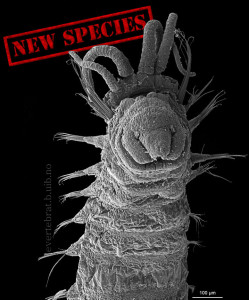
Ampharete undecima. One of the tools used when describing a new species is the electron microscope, which allows us to take very detailed photographs of the animals. Photo: K. Kongshavn
There are more than 12 000 described species of polychaetes, and the vast majority of these are marine.
They live from the intertidal to the abyssal (all the way to the bottom of the Mariana trench, at approximately 10.970 meters depth! More here)
Polychaetes come in a wide variety of shapes and sizes, from “Barry the giant sea worm” at 1.2 m (!) to minute species like Ampharete undecima, the new species we described last year which is up to 5 mm in length. They range from fast, predatory hunters to burrowers and tube-dwellers.
The Australian Museum in Sydney – which hosted the previous International Polychaete Conference – har written a nice introduction to the polychaetes on their web page, you will find it here
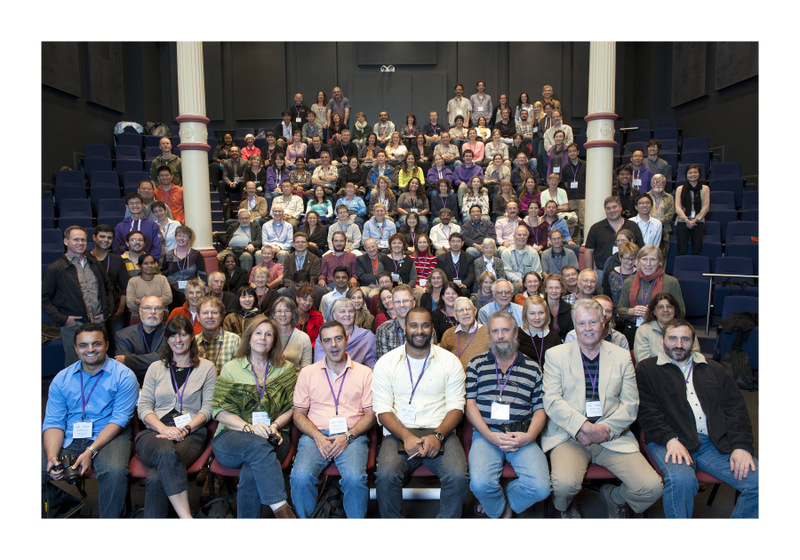
Group photo of the assembled polychaetologists in Sydney in 2013, Kristian is sitting next to the left column (photo © the IPC 2013 crew)
There are about 700 described species of polychaetes occurring in Norwegian waters – and the number is steadily increasing, as new species are being described every year, together with new occurrences for known species. Cryptic species – two or more morphologically similar species that erroneously have been classified as one – are also abundant in polychaetes, raising the species count even further.
Research
There is a substantial amount of ongoing research taking place, and at the University Museum the focus is on polychaete taxonomy:
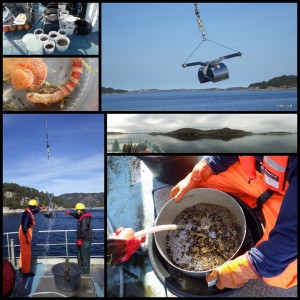 Our scientific collections are of course of vital importance as a source of material and data dating back all the way to “Den Norske Nordhavs-expedition, 1876-1878” (book 1 can be found here) and the 1910 Michael Sars Expedition (“The depths of the ocean : a general account of the modern science of oceanography based largely on the scientific researches of the Norwegian steamer Michael Sars in the North Atlantic“). For an account of some of the earliest collections and taxonomic works on the Norwegian polychaete fauna and how it ties in with present work, see Oug et al 2014.
Our scientific collections are of course of vital importance as a source of material and data dating back all the way to “Den Norske Nordhavs-expedition, 1876-1878” (book 1 can be found here) and the 1910 Michael Sars Expedition (“The depths of the ocean : a general account of the modern science of oceanography based largely on the scientific researches of the Norwegian steamer Michael Sars in the North Atlantic“). For an account of some of the earliest collections and taxonomic works on the Norwegian polychaete fauna and how it ties in with present work, see Oug et al 2014.
However, there is always a need for new material, and we do a fair bit of collecting ourselves, especially in the Bergen area. Above are some action shots of us collecting in the local fjords.
We are currently in the final year of the 3-year project “Polychaete diversity in the Nordic Seas – from coast to abyssal”, affectionately nicknamed PolyNor. You can find information about PolyNor workshops and work taking place at the University Museum by clicking here. This project is financed by the Norwegian Biodiversity Information Centre, and relies heavily on fresh material collected by the MAREANO-project (Marine AREAl database for NOrwegian waters).
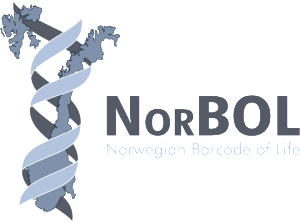 Through the Norwegian Barcode of Life (NorBOL) project, we are working on building a comprehensive library of genetic barcodes: short, species specific DNA sequences. Polychaetes are a focus group here, and so far we have submitted 1900 samples collected in Norwegian waters. Unfortunately, polychaetes are tricky costumers when it comes to genetic barcoding, and we are working on increasing the success rate. So far we have barcodes on about 70% of the species we have submitted, but as only 40% of the samples result in barcodes, a significant proportion of the diversity is still missing. We have also barcoded quite a lot of African polychaetes through our MIWA-project (Marine Invertebrates of Western Africa). Below are two maps with pins showing the localities that we have submitted polychaetes from for barcoding in the BOLD database.
Through the Norwegian Barcode of Life (NorBOL) project, we are working on building a comprehensive library of genetic barcodes: short, species specific DNA sequences. Polychaetes are a focus group here, and so far we have submitted 1900 samples collected in Norwegian waters. Unfortunately, polychaetes are tricky costumers when it comes to genetic barcoding, and we are working on increasing the success rate. So far we have barcodes on about 70% of the species we have submitted, but as only 40% of the samples result in barcodes, a significant proportion of the diversity is still missing. We have also barcoded quite a lot of African polychaetes through our MIWA-project (Marine Invertebrates of Western Africa). Below are two maps with pins showing the localities that we have submitted polychaetes from for barcoding in the BOLD database.
Efforts are ongoing on the taxonomy of both Norwegian and West African polychaetes – we can for certain say that “more research is needed!” on the topic.
The University Museum also participates in the education of polychaetologists for the future: One of our students defended his Master of Science on taxonomy of the genus Diopatra in the family Onuphidae last Friday, you can read more about that here.
To sum up, polychaetes – bristle worms – are fascinating animals that have adapted to a wide variety of habitats and modes of life. They are incredibly diverse, are important parts of the marine food webs, they help turn over sediments (like earth worms do on land), they can build reefs with their tubes, and they even have their own International Day!
Below you will find a slideshow featuring some of the amazing polychaete diversity, we hope you will enjoy it!
[slideshow_deploy id=’1132′]
If you would like to see how other institutions are celebrating today,
then head over to Twitter and the tag
Selected references:
Alvestad, T., Kongsrud, J.A., Kongshavn K. (2014) Ampharete undecima, a new deep-sea ampharetid (Annelida, Polychaeta) from the Norwegian Sea Memoirs of Museum Victoria 71 :11-19 (2014) Open access
Fauchald, K. 1977. The polychaete worms, definitions and keys to the orders, families and genera. Natural History Museum of Los Angeles County: Los Angeles, CA (USA) Science Series 28:1-188 Available online at http://www.vliz.be/imisdocs/publications/123110.pdf (this is “the pink book”!)
Oug E, Bakken T, Kongsrud JA. 2014. Original specimens and type localities of early described polychaete species (Annelida) from Norway, with particular attention to species described by O.F. Müller and M. Sars. Memoirs of Museum Victoria 71: 217-236. Open Access.
Thank you to Nataliya Budaeva for supplying photos of Kristian, and to Arne Nygren and Fredrik Pleijel for polychaete photos!



